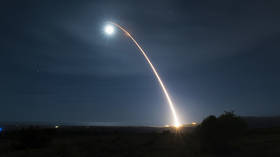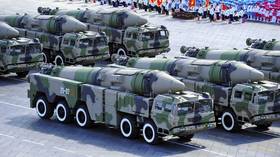Pentagon reveals plans for hypersonic tech

The US Department of Defense has asked private companies to come up with proposals for a high-speed test aircraft for the military, according to the Pentagon.
The firms should should submit their proposals to the US Defense Innovation Unit (DIU), which champions the adoption of commercial technology in the military, by September 16.
The Pentagon is seeking to alleviate pressure on its testing infrastructure through a program called Hypersonic and High-Cadence Airborne Testing Capabilities.
Earlier, Barry Kirkendall, the DIU’s technical director for space, told C4ISRNET news portal the project aims to clear some of the logjams that have slowed down the development of hypersonic programs in recent years.
Any aircraft must meet a number of criteria, including reaching a speed of Mach 5+, have a maneuverable or non-ballistic flight profile, be able to collect near real-time data, and accommodate at least two payloads with at least two placement options.
The move by the DIU to solicit the private sector’s support comes amid fears that the US may be lagging behind Russia and China in the development of hypersonic technologies. However, in mid-August, Kathleen Hicks, the US Deputy Secretary of Defense claimed that this is not the case.
Countries around the world have been focusing on hypersonic development, given that such weapons can bypass modern air defenses by using maneuverable glide vehicles that make their flight path almost unpredictable.
In late June, however, the Pentagon ran into issues when a test of a US hypersonic weapon failed due to an “anomaly” that prevented the full trial of the system.













